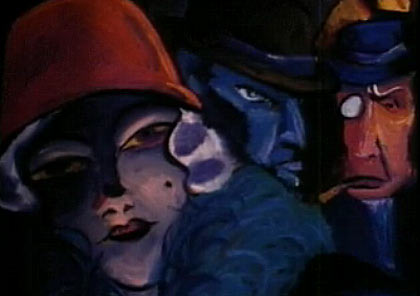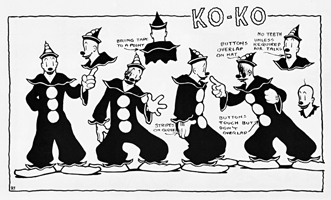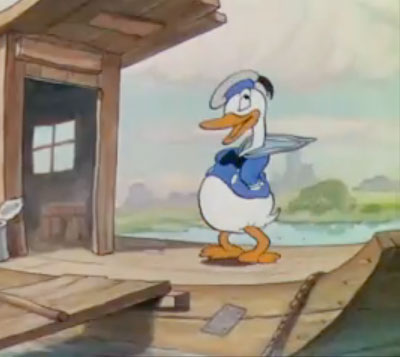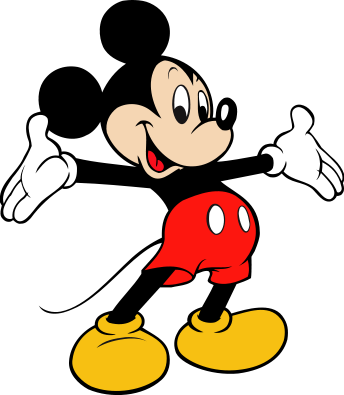Sunday 8 May 2011
Experimental Animation
During the Avant- Garde and Abstract Art era of film making a new type of animation, paralleling these movements, emerged. Standing as a contrast to "commercial" animation, this type of animation sought to explore new techniques , use animation as a means of artistic self expresion, and create new ways of animating.
Experimental animation is usually done by an individual as opposed to a studio, and is usually produced with much smaller budgets than other animations. However, this is not an impediment but, on the contrary, it seems to help with the experimental nature of this art form by forcing the creator to think outside of the box. Although not usually not commercially successful, experimental animations have nonetheless left an imprint on mainstream animation, influencing such works as Disney's "Fantasia".
Hans Richter's "Rhythm. 23" from 1923:
Andrzej Pawlowski's "Here and There" (1957)
Len Lye's "Free Radicals" (1958):
Oskar Fischinger's "Danse Macabre":
Normal McLaren's "Dots" (1940):
Mary Ellen Bute's "Synchromy No. 4":
Walter Ruttman's "Opus I" :
As we can see, experimental animators play with form, colors, textures, rhythm, combine mediums, use controversial images and rarely use storytelling, all in an attempt to illicit emotion from the viewer.
While not a fan of experimental or abstract animation, I find some of them quite interesting and inspirational. The raw emotions and images one derives form viewing such animations are a great way of getting inspiration for any art form.
United Productions of America
Following the Disney animator's strike in 1941 (where many animators left the studio as a result of the slow formation of The Screen Cartoonist Guild) John Hubley (a former Disney employee) formed United Productions of America (UPA) was formed. Most of the animators that left Disney joined this new studio as a way of protesting agains Disney and because of the need of finding a new job.
UPA pioneered a new approach to animation- "limited animation", where the aim was to lower production costs by having fewer than 25 frames per second, reusing stock animation, animating only certain parts of characters (like arms , legs , or mouths) and paying little attention to perpective and realism.
The animators experimented with the style and developed abstract and symbolic animations that focused more on content rather than form.
Chuck Jones was one of the first animators to try limited animation in the animated short, "The Dover Boys of Pimento University":
"Gerald McBoing Boing" was the first of UPA's successes. It won an Academy Award in 1950:
Mr. Magoo was one of the most beloved stars from UPA:
The revolutionary new way of animating that was started UPA has forever transformed the world of animation. Most 2D animations nowadays using limited animation.
Non-Disney Cartoon Stars - Part 2- Warner Brothers Cartoons
Warner Brothers have created some of the most memorable, exciting and funny cartoon characters to date.
As opposed to the "cute, typical, conventional characters of Fleicher and Disney, WB created screwball characters with strong vocals (mostly done by Mel Blanc). They also invented "click tracks" which used musical puns to match the action on the screen.
Porky Pig, created by Fritz Frelang, was one the first stars. A huge hit, his most famous characteristic was his stuttering. His has been animated by Tex AVery and Bob Clampett. Mel Blanc provided the voice for most of his appearances.
Bugs Bunny, the second most popular cartoon character in the world, was originally designed by Cal Danton and modified by Tex Avery, and later by Robert McKimson.
He first appeared in "Porky's Hare Hunt" in 1938:
The first short in which he was the title character was: "A Wild Hare" in 1940:
Daffy Duck, bearing a slight resemblance to Disney's Donald Duck, made his debute in 1937 in the short " Porky's Duck Hunt":
Warner Brother's characters were sneaky, devious, intelligent, had snappy comebacks , had strong designs and appeared in each other's cartoons forming a close knit family. They have been so popular that they have appeared in two live action movies, have a vast array of merchandise , from figurines and plush toys to t-shirts and stationary.
Warner Brother's characters are some of the funniest, zaniest I have even seen. They have great personalities (the monotonous Marvin the Martian, the short tempered Yosemite Sam, the slow minded Elmer Fudd , the unlucky Wile E. Coyote) and are beautifully animated.
Non-Disney Cartoon Stars - Part 1
Although Disney had some of the most popular characters, there were many more cartoon stars in Hollywood.
Winsor Mckay's Gertie the Dinosaur was one of the first animated stars of her day:
Otto Messmer 's Felix the Cat was another star:
Max Fleischer created several stars.
Koko the Clown:
Betty Boop - a sex symbol in her own wright:
And Popeye:
These characters seem to be aimed at a more mature audience. Betty Boop was modeled after the "It girl" of those times, Clara Bow, and Popeye was a pipe smoking sailor that regularly got into fights.
Their popularity still holds to this day, with dozens of animated shorts, comic books, figurines and games created. Their timeless appeal demonstrated that a well designed, well rounded character bypasses age, race or sex.
Disney's Donald Duck
This anthrophomorphic duck, know for his bad temper and semi-intelligible speech pattern, has been a huge success with the public, being ranked 3rd best cartoon character of all time (right after Mickey Mouse and Bugs Bunny).
He first appeared in "The Little Wise Hen" in 1934:
His first bouts of anger were portrayed in the Mickey Mouse cartoon " Orphans Benefit" :
He continued to feature in Mickey Mouse cartoons, his first headliner short coming in 1937 with Ben Sharpsteen's cartoon "Don Donald" :
In 1942, Disney won an Academy Award for " Der Fuehrer's Face", a Donald propaganda cartoon:
Donald's popularity spurred the creation of associated characters such as Donald's nephews.
Donald Duck is more popular than Mickey Mouse in Scandinavian countries. The problematic of his morality has even been debated in Finland. Some citing his lack of pants and him living with Daisy, while not being married, as being "too bourgeois" while others regard him as a "genuine proletarian.
His design has remained mostly the same as time's gone by.
his original design :
had him wearing his trademark cap, sailor suit and color palette.
His subsequent design:
retained the same clothes, but made him "cuter" with larger eyes, a slimmer body, a rounder head and bigger feet.
Donald is one of the most popular Disney character, and , in my opinion, one of the most lovable ones. His character flaws and quirky personality make him more believable and likeable and his lack of pants is hilarious.
Disney's Mickey Mouse
This Disney mascot has appeared in countless Disney shorts, films, and recently a critically appraised video game.
Mickey was born as a replacement for Oswald the lucky Rabbit, a character created by Disney studio for Charles Mintz, but over whom Walt Disney no longer held any copy rights. The inspiration for Mickey came from Walt's pet mouse that he owned when he lived on a farm as a boy. Originally names Mortimer Mouse, the name would soon be dropped ( at Lillian, Disney's wife, request) and Mickey Mouse would be adopted.
The first short in which Mickey starred was "Plane Crazy" in 1928:
The first Mickey Mouse that used sound was "Steamboat Willie" in 1928:
"The Band Concert" 1935:
Mickey Mouse became so famous that Mickey Mouse Clubs were popular in cinemas. The financial success that came form this popularity would be the basis of Disney's empire.
Mickey's design has changed over the years.
The original version lacked pupils, gloves (to help distinguish hands from the body ), a stodgier appearance and smaller ears.
The design used nowadays features the original red pants, large eyes, round head and round ears that face the same direction no matter the perspective used.
The ears have even become a symbol of Disney Studios.
Mickey is the most recognisable character in America.
Because of the fact that he has become a symbol of Disney and America, Mickey is ofter parodied or regarded with hatred by anti-American satirists.
In 1935 Romanian authorities banned Mickey Mouse films in cinemas out of fears that children would get scared at seeing a 10 foot mouse on screen.
As we can see, Mickey Mouse is a symbol, a cartoon character people love and love to hate. Personally I paid very little interest in Mickey Mouse as a child, preferring Donald Duck's antics to Mickey's high pitched voice and annoying laugh. Still, I respect his simple design and world wide appeal and recognise his value to the world of animation.
"Snow White and the Seven Dwarfs" -1937
Based on a fairy tale by the Brothers Grimm, this Disney feature animation is still regarded as one of the best examples of traditional animation. A great risk for Disney Studios, this animation, which could have been a commercial flop, was the one that cemented the studio as the leading practitioner of animation in the world. To this day it is looked upon animators and viewers alike as a master piece.
Though it stays mostly true to the fairy tale, a few differences can be seen:
- the absence of the biological mother; the film only depicts the stepmother - she serves as a contrast to Snow White : Good vs. Evil
The stepmother from "Snow White"
- the absence of the three gifts from the witch. Only the poisoned apple is use. This was because of o need to downgrade the importance of the dwarfs, who saved Snow White from the first two gifts in the fairy tale.
Apple scene in French.
- Snow white wakes up after the prince kisses her. In the original version, she wakes up when the piece is apple is dislodged from her throat. This scene was used to accentuate the idea of true love that never dies.
Kiss scene.
- the step mother's demise. In the fairy tale she is confronted by Snow White and made to wear deadly hot iron shoes. This was changed to her folling of a cliff in the movie. This change was put in use to downplay the violence of the original scene.
The animators that worked on the film were: Frank Thomas, Dick Lundy, Arthur Babbitt, Eric Larson, Milton Kahl, Robert Stokes, James Algar, Al Eugster, Cy Young, Joshua Meador, Ugo D'Orsi, George Rowley, Les Clark, Fred Spencer, Bill Roberts, Bernard Garbutt, Grim Natwick, Jack Campbell, Marvin Woodward, James Culhane, Stan Quackenbush, Ward Kimball, Woolie Reitherman, Robert Martsch.
Even though the film was a huge succes, Walt Disney had a hard time getting it of the ground. The initial budget of 250 000 $ ended up being 1, 488,422.75 $.
A lot of rewriting went in to the pre-production. The writers focused on gags for the dwarfs, tried to incorporate all the three gifts of the original story and the price originally would have been more of a stooge in the first drafts.
As far as cinematic influences go , films such as "Nosferatu", "The Cabinet of Dr. Calligari" and "Dr. Jekyll and Mr. Hyde" were recommended by Disney to his staff.
"Nosferatu" -1922
Although a seemingly impossible task to undertake, the feature film was a huge commercial and critical succes, receiving a standing ovation form a star-studded audience and receiving an honorary "Academy Award".
This success led to Disney producing many other feature films that have pioneered animation and shaped it into what it is today, inspiring millions.
Though it stays mostly true to the fairy tale, a few differences can be seen:
- the absence of the biological mother; the film only depicts the stepmother - she serves as a contrast to Snow White : Good vs. Evil
The stepmother from "Snow White"
- the absence of the three gifts from the witch. Only the poisoned apple is use. This was because of o need to downgrade the importance of the dwarfs, who saved Snow White from the first two gifts in the fairy tale.
Apple scene in French.
- Snow white wakes up after the prince kisses her. In the original version, she wakes up when the piece is apple is dislodged from her throat. This scene was used to accentuate the idea of true love that never dies.
Kiss scene.
- the step mother's demise. In the fairy tale she is confronted by Snow White and made to wear deadly hot iron shoes. This was changed to her folling of a cliff in the movie. This change was put in use to downplay the violence of the original scene.
The animators that worked on the film were: Frank Thomas, Dick Lundy, Arthur Babbitt, Eric Larson, Milton Kahl, Robert Stokes, James Algar, Al Eugster, Cy Young, Joshua Meador, Ugo D'Orsi, George Rowley, Les Clark, Fred Spencer, Bill Roberts, Bernard Garbutt, Grim Natwick, Jack Campbell, Marvin Woodward, James Culhane, Stan Quackenbush, Ward Kimball, Woolie Reitherman, Robert Martsch.
Even though the film was a huge succes, Walt Disney had a hard time getting it of the ground. The initial budget of 250 000 $ ended up being 1, 488,422.75 $.
A lot of rewriting went in to the pre-production. The writers focused on gags for the dwarfs, tried to incorporate all the three gifts of the original story and the price originally would have been more of a stooge in the first drafts.
As far as cinematic influences go , films such as "Nosferatu", "The Cabinet of Dr. Calligari" and "Dr. Jekyll and Mr. Hyde" were recommended by Disney to his staff.
"Nosferatu" -1922
Although a seemingly impossible task to undertake, the feature film was a huge commercial and critical succes, receiving a standing ovation form a star-studded audience and receiving an honorary "Academy Award".
This success led to Disney producing many other feature films that have pioneered animation and shaped it into what it is today, inspiring millions.
Early Sound in Animation
The first examples of silent films usually had a live band accompanying them.
One type of silent film that used this was japanese benshi films.
Example of benshi film with modern "dubbing".
Edison invented the Kinetophone in 2895 wich combined sound (a Phonograph) with moving images.
Edison's Kinetophone.
In 1907 Eugene Lauste used separate film strips.One for picture and one for sound. While in 1919 De Forrest used a single strip for both. This eventually led to the first comercial application of sound inf ilm in 1923.
The first animation studio to use sound was Bray Studios in 1919.
Example of Bray Studios animation.
"Dinner time" by Paul Terry (1928) was one of the first commercially successful applications of sound with animation.
Paul Terry's "Dinner Time"
Disney Studio's follwed soon after with "Steamboat Willie" in 1928:
And the first Technicolor animation using color, produced by Disney in 1933:
"Flowers and Trees"
Chronophotography
"Chronophotography is an antique photographic technique from the Victorian era (beginning about 1867-68), which captures movement in several frames of print. These prints can be subsequently arranged either like animation cels or layered in a single frame. It is a predecessor to cinematography and moving film involving a series of different cameras, originally created and used for the scientific study of movement."
As we can see, chronophotography can be seen as one of the first types of animation, a predecesor to classic animation if you will.
The process used would be as following: the photographer would set up a number of cameras, which would be
then be trip wired or electrically timed to take the pictures while the subject was moving. It could then be used to be displayed in motion or compar phases in motion.
Edward Muybridge was one of the leading practitioners of chronophotography. His works are used to this day by animators because of their high quality.
As we can see, chronophotography can be seen as one of the first types of animation, a predecesor to classic animation if you will.
The process used would be as following: the photographer would set up a number of cameras, which would be
then be trip wired or electrically timed to take the pictures while the subject was moving. It could then be used to be displayed in motion or compar phases in motion.
Edward Muybridge was one of the leading practitioners of chronophotography. His works are used to this day by animators because of their high quality.
Example of Muybridge's work
Subscribe to:
Posts (Atom)




















